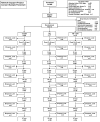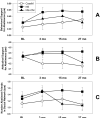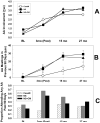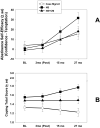Changing network support for drinking: network support project 2-year follow-up
- PMID: 19309183
- PMCID: PMC2661035
- DOI: 10.1037/a0015252
Changing network support for drinking: network support project 2-year follow-up
Abstract
The Network Support Project was designed to determine whether a treatment could lead patients to change their social network from one that supports drinking to one that supports sobriety. This study reports 2-year posttreatment outcomes. Alcohol-dependent men and women (N = 210) were randomly assigned to 1 of 3 outpatient treatment conditions: network support (NS), network support + contingency management (NS + CM), or case management (CaseM, a control condition). Analysis of drinking rates indicated that the NS condition yielded up to 20% more days abstinent than the other conditions at 2 years posttreatment. NS treatment also resulted in greater increases at 15 months in social network support for abstinence, as well as in AA attendance and AA involvement than did the other conditions. Latent growth modeling suggested that social network changes were accompanied by increases in self-efficacy and coping that were strongly predictive of long-term drinking outcomes. The findings indicate that a network support treatment can effect long-term adaptive changes in drinkers' social networks and that these changes contribute to improved drinking outcomes in the long term.
Figures






References
-
- Arbuckle, James L. Amos 7.0 User's Guide. SPSS Inc.; Chicago, IL: 2006.
-
- Bandura A. Social foundations of thought and action. Prentice-Hall; Englewood Cliffs, NJ: 1986.
-
- Beattie MC, Longabaugh R. General and alcohol-specific social support following treatment. Addictive Behaviors. 1999;24:593–606. - PubMed
-
- Bollen KA, Long SJ. Testing Structural Equation Models. SAGE Focus Edition vol. 154. 1993.
-
- Bond J, Kaskutas LA, Weisner C. The persistent influence of social networks and Alcoholics Anonymous on abstinence. Journal of Studies on Alcohol. 2003;64:579–588. - PubMed
Publication types
MeSH terms
Grants and funding
LinkOut - more resources
Full Text Sources
Medical
Miscellaneous

